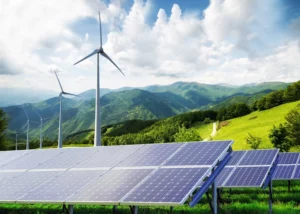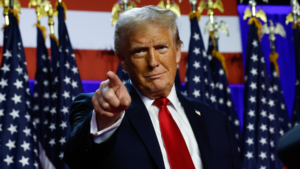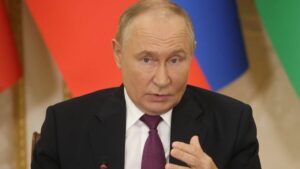Population Growth and Investment Reforms Lift the UAE’s Economy

The UAE is on an economic tear, as higher oil prices, strong capital and investment inflows, and surging domestic activity boost the country’s growth outlook.
Gross domestic product (GDP) is forecast to increase by 3.4% in 2023 — a higher figure than any of its five peers in the Gulf Co-operation Council (GCC) — and rise to 4% in 2024, according to the most recent forecasts of the International Monetary Fund (IMF).
This follows a bumper 2022 in which the economy grew by 7.9% thanks to spiking oil production and the effect of Covid-19 stimulus measures.
The UAE’s prospects are also supported by its safe-harbour status; start-ups, entrepreneurs and investors are flocking to the country following Russia’s invasion of Ukraine and as political and economic stagnation has hit other regions.
In June, surging immigration pushed Dubai’s population above 3.6 million for the first time, while the Dubai Chamber of Commerce says 30,000 new businesses were registered in the first six months of the year, up from 21,000 in 2022. These trends have also lifted the country’s real estate market.
“The conflict in Ukraine appeared to result in some inflows of talent and wealth, benefiting the real estate market; we expect this to cool somewhat in 2024,” says Nemr Kanafani, senior economist for the Middle East and north Africa at The Conference Board, a non-profit think tank and business membership group.
The UAE’s current growth trajectory has to do with the fact that, for years, the authorities have been ahead of the curve.Nemr Kanafani
Experts say structural reforms and other changes introduced by the government have helped this new cohort of investors and entrepreneurs boost economic activity across the country.
“The UAE’s current growth trajectory has to do with the fact that, for years, the authorities have been ahead of the curve in terms of reforms, infrastructure investment and laying down the regulatory foundations for digitisation,” says Mr Kanafani.
Recent rule changes include a liberalised visa framework allowing 10-year residency permits, 100% foreign ownership of onshore companies in many sectors, and forward-looking digital regulations covering everything from e-commerce to cryptocurrencies.
Dubai’s status as a booming digital business and financial hub aligns with the government’s ambitious Digital Economy Strategy, launched in 2022, which aims to double the digital economy’s contribution to the UAE’s GDP from 9.7% in 2022 to 19.4% in the next 10 years.
The strategy emphasises big leaps in digital infrastructure, nurturing powerful new sectors like artificial intelligence (AI), as well as boosting technical skills and expertise across the country.
“The goal is quite ambitious and is supported by one of the most, if not the most, comprehensive action plans I have ever personally seen,” says Francesco Burelli, a partner with Arkwright Consulting in Dubai.
“The UAE has been at the forefront of digital transformation and investment for a long time. Sectors of digital excellence include smart government services, telecommunications and connectivity, blockchain and cryptocurrencies, [and] AI.”
Saudi calling
But the stars are aligning for the UAE in other ways, too. The largest economy in the region, Saudi Arabia, is working on several ‘giga-projects’ to accelerate its transition from oil dependence, with UAE-based firms likely to participate.
According to Cedric Berry, a sovereign analyst with rating agency Fitch, some of these developments are so large that Emirati companies could potentially benefit as expertise and capacity from neighbouring countries are drawn in to work on them.
“Something to watch for the UAE is how much it can benefit from the large development projects in Saudi Arabia,” says Mr Berry.
“Although the Saudi government has been trying to [allocate] much of the work [to companies based in the country], the UAE has a lot of expertise, and we think it could stand to benefit.”
This opportunity sits alongside large, ongoing domestic projects linked to renewable energy as the UAE prepares to host COP28 in November and December.
Under the auspices of the UAE’s Net Zero 2050 initiative, massive clean energy installations, including the Mohammed bin Rashid Al Maktoum Solar Park in Dubai and a new nuclear plant in Abu Dhabi, are being developed at scale.
These trends are feeding into attractive profit metrics for the UAE’s corporate sector. Listed companies in Abu Dhabi and Dubai outperformed GCC peers by registering a 50% increase in net profits year-on-year in the first quarter of 2023, according to research from Kamco Invest.
This strong performance has come despite a higher interest rate environment. The Central Bank of the UAE’s base rate stands at 5.4%, more or less matching movements by the US Federal Reserve, and is likely to remain higher for longer in lockstep with US policy.
However, experts say UAE-based companies have shouldered this hiking cycle relatively well, following a multi-year real estate market downturn and the impact of the Covid-19 pandemic, which developed a more resilient business ecosystem by weeding out less productive businesses.
Tax receipts boom
The outperformance of UAE companies, coupled with a robust consumer sector and high levels of immigration, is also boosting the UAE’s public finances through stronger tax receipts.
According to research from Fitch, the consolidated budget surplus of the UAE’s constituent emirates is expected to reach 4.6% of GDP in 2023, after hitting 11.1% in 2022 thanks to the unexpected rise in oil revenues as a result of the war in Ukraine.
Dubai in particular is strengthening its balance sheet as it plans to repay Dh29bn ($7.9bn) in debt by the end of this year. Fitch reckons this will push its debt-to-GDP ratio from 62% in 2022 to 53% by the end of the year.
“What that’s signalling is Dubai’s public finances are doing pretty well,” says Mr Berry. “We estimate there was a balanced budget last year and there will probably be a small surplus this year. Dubai is using those surpluses to pay down debt and improve its balance sheet.”
The introduction of new revenue-generating measures, including the launch of value-added tax in 2018 and a new corporate tax of 9% for income over Dh375,000 in June this year, is also providing the Emirati authorities with budget flexibility through new sources of revenue.
Trade winds
Despite strong domestic activity and improving public finances, the fate of the UAE’s open economy is vulnerable to the health of key global peers, including its largest trading partner, China.
Nevertheless, the country’s business-first approach to international relations is bearing fruit via growing trade partnerships. The government is aiming to hit a $1tn non-oil trade target by 2031, up from about $600bn in 2022.
To this end, the authorities have been on a trade and investment blitz, signing comprehensive economic partnership agreements with a number of fast-growing economies, including Turkey, Indonesia, India and Cambodia. Six further agreements are expected to be signed by the end of the year.
“These comprehensive economic partnership agreements (CEPAs) are significant as they show the UAE sees its future prosperity linked to internationalisation. While individual CEPAs will mostly have modest impacts, collectively they stand to offer significant benefits to the economy,” says Scott Livermore, chief economist at Oxford Economics Middle East.
The UAE’s CEPA with India, signed in May 2022, is expected to increase bilateral trade by more than $100bn in the next five years. It also comes as the two countries look to settle more of this trade using local currencies.
Meanwhile, in August this year the UAE officially joined the Brics (Brazil, Russia, India, China, and South Africa) group of countries in a sign of its growing commitment to new international partnerships.
Although geopolitical risks are high — particularly if conflict in the wider region escalates — most experts say the country is well-positioned over the near to medium term.
“The risks to the outlook are balanced. Domestically, one can worry about overheating in the real estate market or, from the international standpoint, the repercussions of a global recession or collapse in oil prices,” says Mr Livermore.
“However, it would not be surprising if the non-oil economy managed to sustain growth in excess of 4% for an extended period as the government has been effectively pursuing its growth and diversification agenda,” he adds.
Source : The Banker





